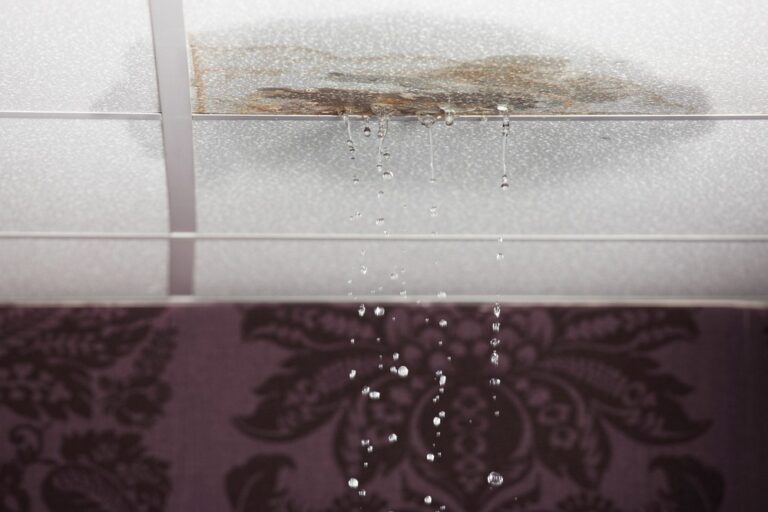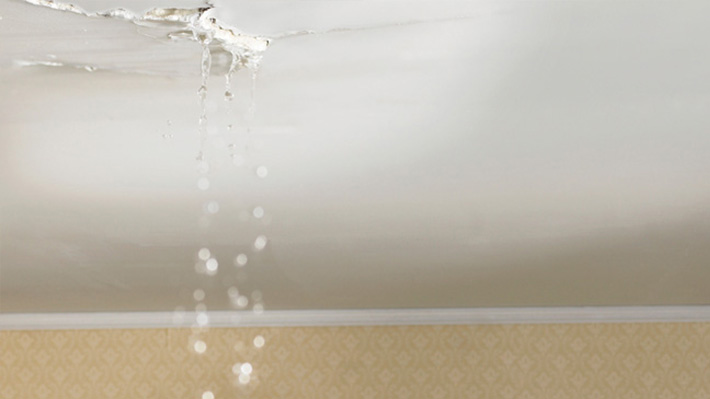📞 (504) 384-0676 📍 1 Galleria Blvd Suite 1900, Metairie, LA 70001⏰ 08:00 A.M. – 05:00 P.M.
The Ultimate Roofing Guide: Pros And Cons For Informed Choices

Roofing: Where to Start When Choosing a New Roof
Thinking about replacing your roof? It can feel a bit overwhelming at first — there are so many materials, styles, and prices to compare. Each one comes with its own strengths and a few trade-offs. But don’t worry, that’s exactly what this guide is here for.
In this 2025 roofing guide, we’ll walk you through the most popular options — asphalt shingles, metal, tile, slate, and newer modern materials — so you can see what really fits your home, your budget, and the kind of look you want.
Every type of roof offers something different. Some are affordable and easy to maintain; others focus on long-term performance, energy savings, or that classic curb appeal. Once you understand what each material brings to the table, choosing the right one becomes a lot easier — and you’ll end up with a roof that looks great and lasts for years.
Asphalt Shingles

These days, asphalt shingle roofs come in two main types: organic and fiberglass. Organic asphalt shingles are crafted from a blend of paper, ceramics, and asphalt, while fiberglass shingles consist of a glass fiber mat, a waterproof filler, and a layer of asphalt.
Pros
Asphalt shingles are favored for several reasons. They are budget-friendly and easy to install, making them a popular choice among homeowners. Their durability often comes with warranties of up to 30 years. Asphalt shingles also offer a wide range of colors and styles, providing flexibility, especially if your roof has a curved design.
Cons:
In regions with extreme temperature fluctuations, asphalt shingle roofs can face challenges. They may warp or crack due to these shifts. Windstorms can sometimes lead to shingles lifting or blowing away. In humid climates, moss and algae growth can be an issue, potentially deteriorating the roof if not addressed promptly.
Metal Roofing

Pros
Metal roofs have earned a solid reputation for how tough they are. When they’re installed right, they can last 50 years or more without much trouble. They hold up against almost anything — heavy rain, hail, snow, even high winds. Another thing homeowners like is how energy-efficient metal roofing can be. Because it reflects sunlight, it helps keep your home cooler and can trim down those summer energy bills.
And here’s a bonus: most metal roofs are made from recycled materials and can be recycled again later, making them one of the more eco-friendly options out there.
Cons:
The upfront cost of metal roofing is higher than some other materials, but the long-term benefits often justify the expense. Expansion and contraction due to temperature changes can lead to noise in heavy rain or hail.
Slate Roofing

Pros
Slate roofs are renowned for their timeless beauty and incredible longevity, often lasting over a century. They are fire-resistant and require minimal maintenance.
Cons:
The high cost of slate roofing can be a significant deterrent for some homeowners. Installation is intricate and should be handled by experienced professionals. Walking on a slate roof can cause damage, making maintenance challenging.
Wood Shingles And Shakes

Pros
Wood roofs provide a natural, rustic aesthetic. They are biodegradable and, when sustainably sourced, eco-friendly. With proper care, wood roofs can last 30 to 50 years.
Cons:
Wood roofing requires regular maintenance and is susceptible to rot, mold, and pests. Fire can be a concern, but fire-resistant treatments are available.
Tile And Cement Roofing

Pros
Tile and cement roofs are some of the toughest options out there. When they’re installed right, they can last 50 years or more and still look great. They hold up through just about anything — hail, high winds, even strong sunlight — without fading or cracking easily.
They’re also fire-resistant and low-maintenance, which is why many homeowners stick with them for the long haul. And honestly, they just look good. Whether you like the traditional clay-tile style or something more modern, there’s a wide range of colors and textures that can give your home a unique, high-end look.
Cons:
Now, the one thing to think about is weight. Tile and cement roofs are heavy, and not every structure is built to handle that without a few reinforcements. That extra work can bump up the installation cost a bit.
Another thing people notice — repairs can take some effort. If a tile cracks, you can’t always just swap it out yourself. It usually takes special tools or a pro to get it done right, which makes small fixes slightly pricier.
Aluminum Roofing

Pros
Aluminum roofs are a great option if you live in a coastal or humid area. They’re lightweight, naturally resistant to rust and corrosion, and hold up well in places where salty air or moisture can cause problems for other roofing materials.
They’re also impressively durable — many aluminum roofs last up to 50 years or more with very little maintenance. Because aluminum reflects sunlight, it helps keep your home cooler and reduces your energy bills, especially in warmer climates. On top of that, aluminum is eco-friendly, since most panels are made from recycled materials and can be reused again at the end of their lifespan.
Cons:
The main drawback is the initial cost. Aluminum tends to be pricier than some other metals, though it pays off long-term with its durability and energy savings.
Another thing to watch out for is chemical exposure — while it doesn’t rust, certain airborne pollutants or chemicals can cause small pitting marks over time, especially near industrial areas.
Steel Roofing
Pros
Steel roofs are tough — plain and simple. When installed properly, they can last 50 years or even longer, and they handle just about anything the weather throws at them: snow, hail, heavy rain, or strong winds. That’s one reason so many homeowners trust steel when they want something built to last.
Another plus is energy efficiency. Steel naturally reflects sunlight, which keeps your home cooler and helps lower energy bills during the summer. It’s also one of the more eco-friendly options since steel can be recycled again and again without losing strength.
And style? You’ve got plenty of choices — different colors, textures, and finishes — so you can get that clean, modern look or something more traditional to match your home.
Cons:
The upfront cost is definitely higher than materials like asphalt shingles. But if you plan to stay in your home for a while, it usually pays off thanks to its long lifespan and minimal maintenance.
You might also notice more noise during heavy rain or hail, since steel expands and contracts with temperature changes. That said, a good underlayment or layer of insulation usually cuts the sound way down.
Copper Roofing

Pros
Copper roofs have a look that never really goes out of style. When they’re first installed, they shine with that warm, golden color everyone notices — but over time, they slowly age into a soft green patina that gives any home a timeless, weathered charm.
A well-installed copper roof can last more than 100 years, sometimes even longer. It’s naturally resistant to mold, mildew, and algae, which means it holds up beautifully in damp or coastal areas. Another reason people love copper is that it’s sustainable — it’s fully recyclable and, in most cases, already made from recycled metal. It’s a premium material, but it’s built to last a lifetime.
Cons:
Of course, all that quality comes with a price. Copper roofing isn’t cheap, and that’s usually the biggest hesitation for homeowners. It’s also worth mentioning that not everyone loves how it changes color with age. Some folks like that bright shine; others prefer the green patina it develops after a few years.
Installation is another key point — copper needs experienced hands. It takes skill to shape, seal, and fasten correctly, but once it’s done right, you’ll likely never have to think about replacing it again.
Costs of Roofing Materials
1. Asphalt Shingle:
Cost Range: $1,700 to $8,200
Note: If you choose asphalt shingles treated with copper, expect your costs to be on the higher side of this range.
2. Cedar Shakes And Shingles:
Cost Range: $6,800 to $20,000
Note: Opting for pressure-treated shakes and shingles might increase costs but offers greater longevity.
3. Clay And Cement Tile Roofing:
Cost Range: $9,000 to $21,000
Note: Clay tiles usually fall on the more affordable end, while cement and ceramics tend to be on the higher side.
4. Slate Roofing:
Cost Range: $17,000 to $84,000
Note: The price can vary significantly based on the quality of the slate, with Vermont slate generally costing more. Structural reinforcement may also add to the expense.
5. Aluminum Roof:
Cost Range: $7,000 to $20,000
Note: While aluminum roofing may be pricier, its long lifespan and durability make it a cost-effective choice in the long run.
6. Steel Roofing:
Cost Range: $6,000 to $17,000
Note: Despite the higher initial cost compared to shingles, steel roofing is a popular option due to its exceptional durability.
7. Copper Roofing:
Cost Range: $16,000 to $42,000
Note: Copper roofing is typically reserved for high-end homes and historic buildings due to its premium price.
Remember, these costs are approximations for an average-sized home with professional installation and existing roof removal included. Actual costs may vary based on factors such as your location, the roofing contractor you choose, and the specific materials used.
Conclusion:
Choosing the right roofing material isn’t just about looks — it’s about finding the right balance between style, budget, and long-term durability. Every home is different, and what works best for one homeowner might not be the perfect fit for another. Taking the time to understand your options now can save you a lot of stress (and money) later on.
At Simplex Roof, we know that picking a new roof can feel like a big decision. That’s why our team takes the time to walk you through every detail — from materials and styles to maintenance and cost. Whether you’re after something affordable or a roof built to last a lifetime, we’ll help you make the call that fits both your home and your goals.
If you’re ready to get started, reach out for a personalized consultation. We’ll handle the hard part so you can focus on enjoying the peace of mind that comes with a roof done right.
Your perfect roof is just a call away.





